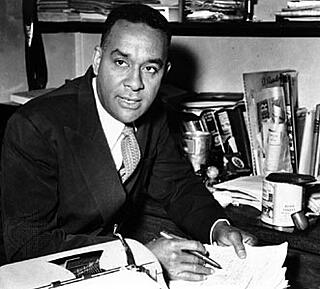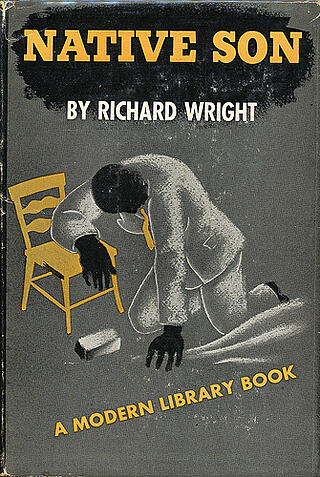The Richard Wright Papers at Yale’s Beinecke Rare Book and Manuscript Library is an enormous collection. It’s one of the collections that’s actually stored on-site, so you don’t need to request access days in advance as you may find with certain other papers owned by the library. The papers contain 143 boxes, along with additional materials. Researchers have access to Wright’s manuscripts, correspondence, journals, travel documents, photographs, and even the novelist’s screen test for the film version of Native Son, his 1940 novel. We’ll tell you a little bit more about the collection.
A Brief Background of Richard Wright (1908-1960)
 Among the most prominent American novelists of the twentieth century, Richard Wright was born near Natchez, Mississippi, moved to Chicago and New York, and later became an expatriate living in Paris until his death. Wright’s autobiography, Black Boy (1945), details his difficult childhood and upbringing in Mississippi.
Among the most prominent American novelists of the twentieth century, Richard Wright was born near Natchez, Mississippi, moved to Chicago and New York, and later became an expatriate living in Paris until his death. Wright’s autobiography, Black Boy (1945), details his difficult childhood and upbringing in Mississippi.
In 1927, Wright moved to Chicago, where he began publishing his own work in journals like New Masses and The Anvil, and he joined the Chicago John Reed Club, a Communist group in the city. By 1935, he started working for the Illinois Federal Writer Project. A short while later, he moved to New York to work as the head of The Daily Worker’s Harlem Bureau. With funding from the John Simon Guggenheim Memorial Foundation, Wright began working on Native Son in 1939. A year later, Harper & Row published the book, and Wright became a sensation.
He traveled to France for the first time in 1946, and shortly thereafter moved to Paris with his family. During his time in Paris, Wright traveled to many different parts of the world, including to Spain, Indonesia, and Ghana (what was then the British colony known as the Gold Coast). He died of a heart attack in Paris in November 1960.
Learning More About the Papers
 What can you expect to find in the Richard Wright Papers at the Beinecke? The collection is organized into four different parts, with the majority of the collection spanning the years between 1940-1960. The first series contains writings from 1933-1977, including drafts and manuscripts of Wright’s work. The second series contains correspondence from 1934-1975, including with prominent literary figures such as Arna Bontemps, Ralph Ellison, Langston Hughes, Gunnar Myrdal, and Margaret Walker. Series three contains Wright’s personal papers from 1927-1978, including journals, travel documents, and other materials. The fourth and final series is made up of subject files from 1929-1959.
What can you expect to find in the Richard Wright Papers at the Beinecke? The collection is organized into four different parts, with the majority of the collection spanning the years between 1940-1960. The first series contains writings from 1933-1977, including drafts and manuscripts of Wright’s work. The second series contains correspondence from 1934-1975, including with prominent literary figures such as Arna Bontemps, Ralph Ellison, Langston Hughes, Gunnar Myrdal, and Margaret Walker. Series three contains Wright’s personal papers from 1927-1978, including journals, travel documents, and other materials. The fourth and final series is made up of subject files from 1929-1959.
Outside Wright’s manuscripts, some of the most interesting items in the collection, we think, are related to his travels in Asia and Africa during the 1950s. In 1953, Wright traveled to the Gold Coast for ten weeks to document the former colony’s transition to the independent nation of Ghana. His account was published in his nonfiction book Black Power (1954). In the Papers, researchers can view hundreds of photographs Wright took himself on the trip. In April 1955, Wright traveled as a journalist to the Bandung Conference in Bandung, Indonesia. The conference was designed as a meeting for newly independent postcolonial states in the non-Western world, and Wright wrote about his experiences in The Color Curtain: A Report on the Bandung Conference (1956). The collection contains boxes of materials Wright brought back from Bandung, as well as his press pass and photos.
This collection is incredibly varied not only in terms of the types of materials contained within it, but also in terms of the locations from which many of the materials derive. We invite you to explore the Papers and the ways they illuminate Wright’s work and life.









